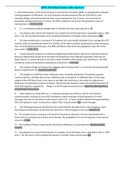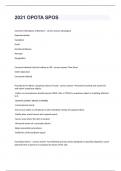Samenvatting
Summary Media Industries and Audiences
- Instelling
- Erasmus Universiteit Rotterdam (EUR)
- Boek
- Media/Society
This is a complete summary for the course Media Industries and Audiences based on the sixth edition of the book Media/Society.
[Meer zien]














